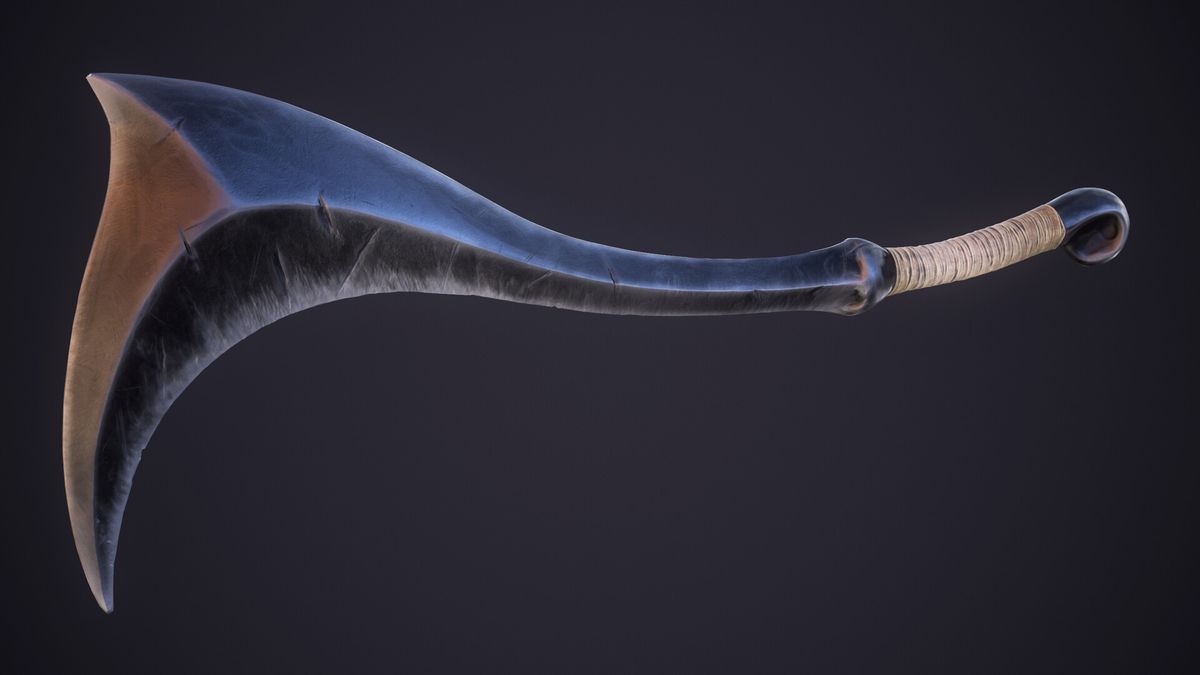Varaz
Within the deserts of Inbaria, the nomadic Utsumi tribes constantly fight for territory. These territories are usually either oases, resource hubs, or large and durable stone formations known as Talons. While water, food, and other resources can be stolen or taken as spoils of battle, Talons are some of the few structures that resist the erosion from the ripping winds of the desert, thus making them a particular priority for the Utsum as they are used as slightly more permanent homes that can postpone their usual nomadic lifestyle.
The Utsum living in these Talons set up temporary homes and tents, as they may be evicted by a rival tribe should their warriors prove unable to defend the Talon. Talons are vast, naturally occurring stone structures that possess many different crevices, caverns, and openings. In order for these large tribes to temporarily settle within these stone structures, often of unorthodox shape, the Varaz was invented.
The Varaz is a tool developed by craftsmen of various Utsumi tribes to better traverse the Talons and make use of all surface area of the structure. It appears as a curved tool, akin to a hand pick, that can be used for chopping, digging, and most importantly, climbing. The surface of the stone that makes up a Talon is slick with sand, making it difficult to naturally climb. With the constant exchanging of nomadic tribes leaving and entering a Talon, metal pitons or carved cracks are left behind in the stone. The Varaz utilizes these features, allowing the narrow end of the tool to fit into or on these anchors in the walls and easing the climb up and around the Talon.
Varaz are typically made of carved stone and bone as these are the two most common materials available in the deserts of Inbaria. Tribes that have a stronger hold on a Talon may find iron within the stone, or perhaps even trade with outside settlements. These can result in Varaz made of wood and metal, proving or durable and valuable among the Utsum. However, regardless of the basal materials that make up the tool, each blade of a Varaz is finished by coating it in glass. Utsumi craftsmen utilize the sands of the Inbaria as well as kilns made from sections of the Talon they live in to coat each Varaz in a thick layer of glass, which enhances its durability for poorer-quality tools and allows for the tool to better puncture the stone of the Talon.
Of course, due to its design, many Utsumi tribes have co-opted this tool as a weapon. This is usually done by adding an edge to the inner portion of the blade, or by adding studs or sharpened teeth to the inside of the blade. It is a common weapon of newly-committed warriors of a tribe as all members of an Utsumi tribe are trained to used a Varaz to fight and defend oneself. The weight focused on the end of the blade of the weapon additionally allows for it to kick up larger amounts of sand during combat, potentially providing a blinding advantage during battle. The glass of the blade often shatters during battle, and Ustumi warriors have learned to discern when their weapon's glass is about to shatter, flinging glass shards into the eyes of their combatant.
Rumors heard by travelers passing through Inbaria tell of a Varaz that glowed white hot in the sun, melting sand into glass in an instant, and transmuted sand particles in the air into glass needles to fling at enemies.
Concepts of both a Varaz made of hardened iron (top) and bone (bottom).
Varaz are quite common among the Utsum of Inbaria. Used by both warriors and travelers alike, Varaz are treated like weapons by their smiths not only due to their dual use, but pride in their quality.
The Varaz is made up of two components: the blade and the handle. The handle can be made of carved stone, bone, or wood, with the latter two either being more 'expensive' or rare respectively. The blade can be made up of bone, slag metal, iron, or hardened iron made by select craftsmen of Inbaria with increasing costs respectively. Either way, the blade is the coated in glass, needing to be reforged every so often.





Comments